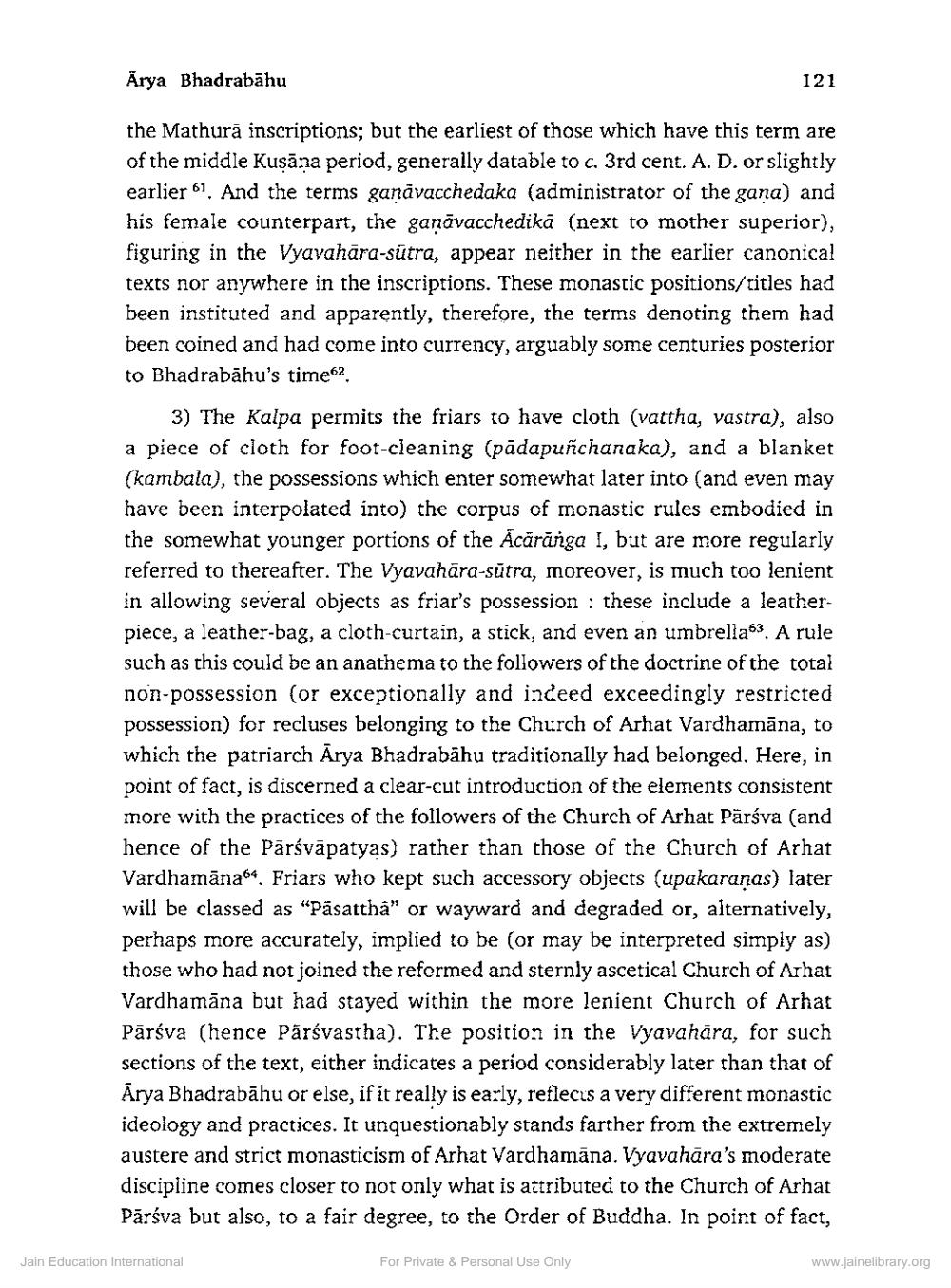________________
Arya Bhadrabāhu
121
the Mathurā inscriptions; but the earliest of those which have this term are of the middle Kusāna period, generally datable to c. 3rd cent. A. D. or slightly earlier 61. And the terms ganāvacchedaka (administrator of the gana) and his female counterpart, the ganāvacchedikā (next to mother superior), figuring in the Vyavahāra-sutra, appear neither in the earlier canonical texts nor anywhere in the inscriptions. These monastic positions/titles had been instituted and apparently, therefore, the terms denoting them had been coined and had come into currency, arguably some centuries posterior to Bhadrabāhu's time62.
3) The Kalpa permits the friars to have cloth (vattha, vastra), also a piece of cloth for foot-cleaning (pādapuñchanaka), and a blanket (kambala), the possessions which enter somewhat later into (and even may have been interpolated into) the corpus of monastic rules embodied in the somewhat younger portions of the Ācāranga I, but are more regularly referred to thereafter. The Vyavahāra-sūtra, moreover, is much too lenient in allowing several objects as friar's possession : these include a leatherpiece, a leather-bag, a cloth-curtain, a stick, and even an umbrella53. A rule such as this could be an anathema to the followers of the doctrine of the total non-possession (or exceptionally and indeed exceedingly restricted possession) for recluses belonging to the Church of Arhat Vardhamāna, to which the patriarch Arya Bhadrabāhu traditionally had belonged. Here, in point of fact, is discerned a clear-cut introduction of the elements consistent more with the practices of the followers of the Church of Arhat Pārsva (and hence of the Pārśvāpatyas) rather than those of the Church of Arhat Vardhamāna64. Friars who kept such accessory objects (upakaranas) later will be classed as "Pāsatthâ” or wayward and degraded or, alternatively, perhaps more accurately, implied to be (or may be interpreted simply as) those who had not joined the reformed and sternly ascetical Church of Arhat Vardhamāna but had stayed within the more lenient Church of Arhat Pārsva (hence Pārsvastha). The position in the Vyavahāra, for such sections of the text, either indicates a period considerably later than that of Arya Bhadrabāhu or else, if it really is early, reflects a very different monastic ideology and practices. It unquestionably stands farther from the extremely austere and strict monasticism of Arhat Vardhamāna. Vyavahāra's moderate discipline comes closer to not only what is attributed to the Church of Arhat Pārsva but also, to a fair degree, to the Order of Buddha. In point of fact,
Jain Education International
For Private & Personal Use Only
www.jainelibrary.org




